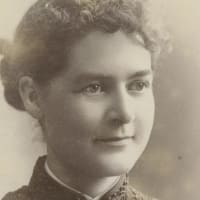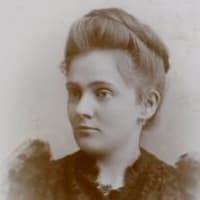 Hughes Cannon
Hughes Cannon
 Cressingham
Cressingham
Colorado was the first state to elect women to serve as legislators—three, in fact. The year was 1894, 275 years after the nation’s first legislature convened in Jamestown, Va.
Since then, women in some statehouses have had to fight for restrooms of their own and adhere to dress codes in an institution where “suit and tie” had been sufficient guidance.
Perhaps the biggest question about women as lawmakers has been, what impact will they have on the laws? That first class in Colorado held some clues.
Rep. Clara Cressingham, who also served as secretary of the Republican Caucus—another first for a woman—died in 1906, at 42. An obituary in the Silverton Standard said, “Instead of wasting her energies to enter into sentimental legislation as had been anticipated by her male associates, she entered zealously into the promotion of practical affairs.” Cressingham advocated for free schools and a state arbitration system and, with fellow female Reps. Carrie Holly and Frances Klock, promoted a home for “delinquent” girls. Klock chaired the Indian and Military Affairs Committee—another first—and Holly served on the Temperance and Public Health and the Education committees. In 1895, Holly was the first woman to propose a bill that became law—a measure raising the age of consent for women from 16 to 18 in rape cases.
Women’s History Month
This story was first published in the Summer 2022 print edition of State Legislatures magazine. We’re posting it here for Women’s History Month, which began in 1980 as Women’s History Week. Read more
Did You Know?
♀ Many statehouses were built with no restrooms for women. Others had facilities for male lawmakers to use, but women had to go to public restrooms sometimes outside the building, even missing votes because of it. And this isn’t ancient history. The Illinois Senate installed a women’s restroom in 1992; the House followed suit in 2011.
♀ A study by the National Women’s Law Center found that in 2018 and ’19, women legislators in states with more female representation introduced and passed more bills than those in states with smaller numbers of women. In fact, male legislators were also more productive in introducing and passing bills in statehouses with more women.
Women made up about 33% of state legislators in 2023, the highest percentage in the nation’s history.
—NCSL’s Women’s Legislative Network
♀ In 2019, women became the majority in the Nevada Statehouse and the U.S. territory of Guam (where women took up the term “ladieslature” in one proud announcement of the feat). Overall, women held 30.7% of seats in state legislatures nationwide in 2022, according to NCSL.
♀ In 1896, a Utah woman’s lawfully wedded husband became her lawful opponent in a race for the state Senate. Martha Hughes Cannon, a Democrat, became the state’s first female senator after she defeated her husband, a Republican.
♀ Jessie Doe and Mary Farnum of New Hampshire were elected in a rare feat—with write-in votes—in 1920, right after ratification of the 19th Amendment gave women the right to vote. But New Hampshire officials said the amendment did not give women the right to hold office and refused to seat them. That led to a March 1921 referendum that showed majority support for elected women—but not the two-thirds needed in a referendum. Nevertheless, the Legislature did seat them.
♀ In 1975, Nancy Brataas was the second woman elected to the Minnesota Senate; the first was elected in 1927 to fill the seat held by her husband, who died that year, so Senate colleagues considered Brataas the first woman elected “in her own right.” One hitch: In 1975, there was no women’s restroom in the chamber. Nor was there recognition of women in the dress code, so Brataas wore a scarf she could fashion as a necktie to gain access to the chamber floor, where neckties were required.
Kelley Griffin is a senior editor at NCSL.